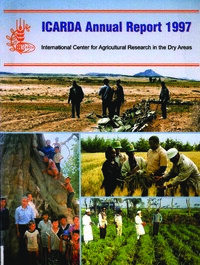ICARDA Annual Report 1997

Authors:
The year 1997 marked a significant milestone in ICARDA's history, celebrating the Center's 20th anniversary. It was a time to reflect on past achievements and look forward to the future.
One of ICARDA's most notable accomplishments over the past two decades has been its strong partnerships with national programs worldwide, particularly in the West Asia and North Africa region. The Center has received commendations from its peers for these collaborations. By gathering feedback from its partners, ICARDA has continually evolved its research programs to jointly tackle critical issues such as increasing agricultural productivity, alleviating poverty, and developing human resources in dry areas. By 1997, ICARDA had established 80 formal agreements for collaboration with ministries of agriculture and environment, universities, and advanced research institutes across the globe.
Among the progress achieved through these partnerships, three major accomplishments stand out. By 1997, more than 442 varieties of ICARDA-mandated cereal, legume, and pasture and forage crops had been released by national partners for farmers in Asia, Africa, Latin America, and several industrialized countries. These new, high-yielding varieties exhibit resistance to diseases and pests, as well as tolerance to environmental stresses. With support from national governments through policy and extension services, combined with improved, environmentally friendly production practices, these varieties have significantly transformed agriculture in several countries.
